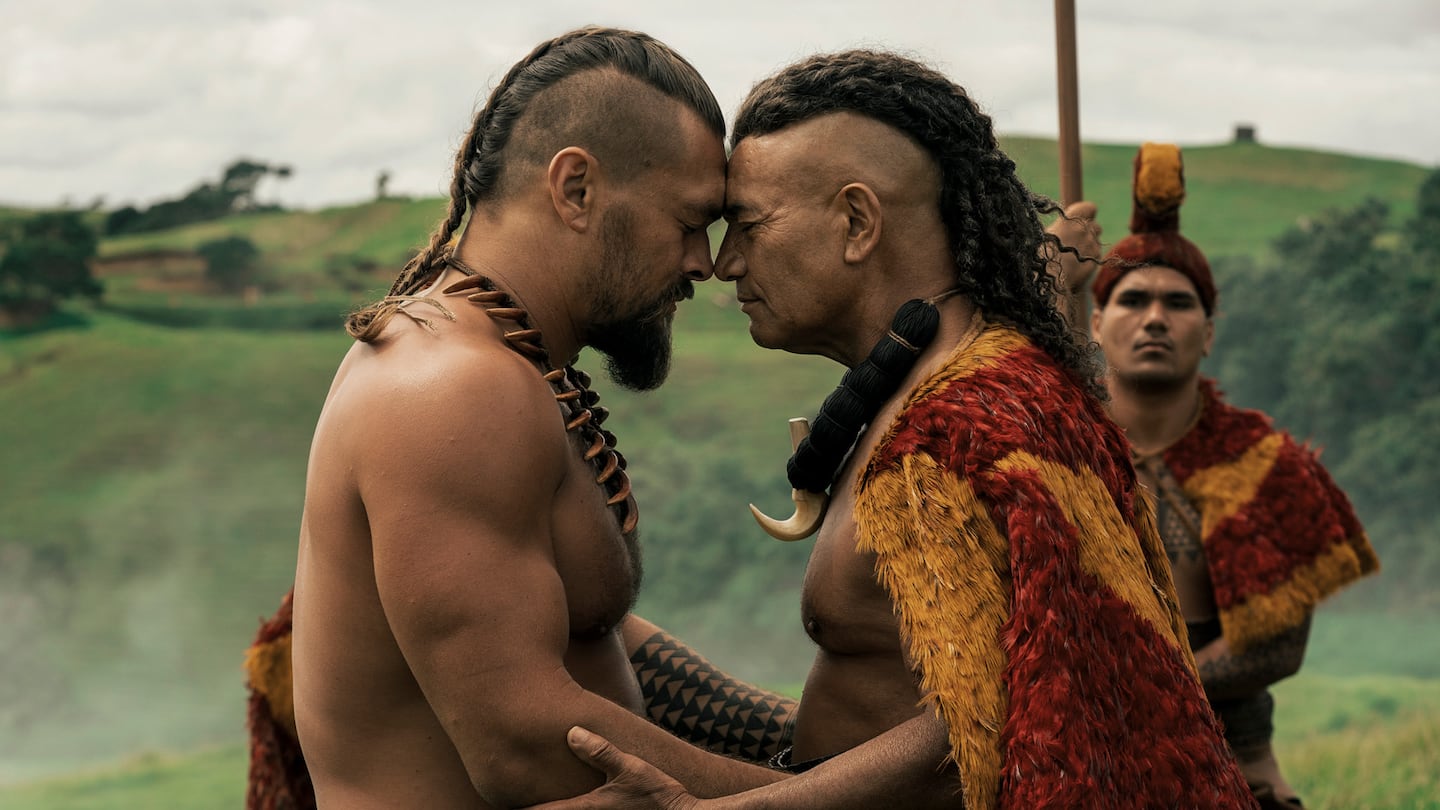Breathtaking scenery, bold storytelling, and a big-budget saga - Ali‘i Kaua - Chief of War has arrived, and with it, the weight of expectation.
Premiering beneath the shimmering night sky at Ko Olina Lagoon, Oʻahu, the atmosphere was abuzz with anticipation - and a faint nervousness. Would this be a moment of pride or discomfort?
This isn’t just a drama series - it is mo‘olelo, the story of kūpuna who lived and shaped the nation of Hawai‘i. Balancing the colossal entertainment industry and kuleana to the lāhui (responsibility to a nation) is no light load. Before the first episode played, oli and hula resounded - depicting the feats of Kamehameha, the ali‘i nui who conquered and united the islands of Hawai‘i. A moving ‘awa ceremony launched this epic series into the world.
From its opening scene, the series pulls us deep into the 18th-century world of Hawai‘i: spectacular coastlines, stunning uhi (tā moko), beautifully woven ‘ahu ‘ula cloaks, and heaving waka. The attention to detail is remarkable - from costumes and set design to the use of ‘ōlelo (Hawaiian language). It’s visually mesmerising, epic, adventurous, and at times, gruesomely brutal. Though the pacing occasionally felt slow, it seemed intentional.
A careful setting of the scene for what is to come: a transformative era in the history of Hawai‘i. I couldn’t help but think – this is Kairākau on a massive scale!

The first two episodes are in ōlelo Hawai‘i. And while several leading cast members are not Hawaiian or fluent speakers of the language, a dedicated team from ʻAwaiaulu worked with actors to bring the language to life. The result? A landmark moment for ‘ōlelo Hawai‘i on screen. As Te Kohe Tuhaka noted at the launch, even as a speaker of te reo Māori, adjusting to ‘ōlelo Hawai‘i required care and humility: “He reo anō, he mita anō. He mahi nui tāku ki te aro atu.” While I could hear the Māori accents among some of the Aotearoa performers, it’s still an impressive feat.
Jason Momoa reflected on the experience of being a “transplant” - “You have no idea what it’s like to be raised away from the place you were born.” Through the week, similar whispers surfaced - questions about the role of the diaspora in telling stories of āina.

I was reminded of The Dead Lands. In 2014, writer and producer Glenn Standring revealed he hadn’t discovered his Māori ancestry until his twenties, described by Leonie Pihama as “raised Pākehā,” sparking questions: what determines a Māori film? Who has the right to tell Indigenous stories - especially when ‘returning to whakapapa’ later in life?
Yet, as writer and producer Thomas Pa‘a Sibbett said on launch night, the motivation was clear: “To create something our children can look to.” For many, this series also represents a milestone - the first time their parents or grandparents have heard ‘ōlelo Hawai‘i spoken on screen in an epic drama.
As I watched the first episode, it felt like Kānaka Maoli (the Indigenous people of Hawai‘i) reconnecting with whakapapa and tūpuna. A tribute to identity.

The action scenes are brutal and unsettling. I couldn’t help but feel disappointed by the continued stereotype of the ‘native savage’, already seen in films such as Apocalypto or The Dead Lands. Temuera Morrison’s depiction of Kahekili makes his infamous role as ‘Jake the Muss’ look meek. And yet one attendee noted that the violence felt authentic - a stark counter-narrative to the glossy, peaceful paradise often sold by the tourism industry. A historic reminder that unification was not achieved without bloodshed.
The traditional weapons used in the film were unfamiliar to me, and this insight into the ancestral practices of warfare in Hawai‘i will be new to many global viewers. There are glimpses of the empowered role of wāhine through the battle scenes, and the role of wāhine in forging the Kingdom - the trailers foreshadowing this later in the series. It really made me eager to see more.

Still, with great ambition comes critical questions. How do we reconcile the aspiration of indigenous representation with the realities of global streaming platforms, what some call “Haolewood”? – (Haole, a Hawaiian term for foreigner). And yes, there may be murmurs - could more of the lead actors have been Hawaiian? Possibly. Would we accept our own tūpuna being portrayed by outsiders? Likely not.
Yet this series navigates that tension by involving Hawaiian creatives at every level, from direction to dialect coaching. Not everyone will be appeased, and that’s the reality.
As Jason Momoa has shared, this was a dream role, the fulfilment of a childhood dream, and that passion is evident in his performance. The end of episode one leaves viewers wanting more.
The week Ali‘i Kaua premiered, Disney’s Lilo & Stitch passed a billion dollars at the global box office. While an international hit, the film centres on a bizarre alien with Hawaiian characters portrayed as comedic or helpless orphans caught up with social services.
In contrast, Ali‘i Kaua offers something different - powerful characters, spectacular scenery, and a compelling storyline. It presents Hawai‘i to the world not as a backdrop, but front and centre.

The connection to Aotearoa is clear, familiar landscapes and voices, faint Māori accents flowing through ‘ōlelo Hawai‘i. Tax incentives in Aotearoa meant much of the series was filmed here. The production team has described it as a collaborative project among whanaunga across Te Moana-nui-a-Kiwa.
While this first series sets the scene leading up to the unification of the islands of Hawai‘i, there is potential for future instalments. It’s clear the intention is to build capacity and capability among the lāhui, and that’s a conversation for Hawaiians to lead.
This is a story of strategy, politics, people, and the shaping of a nation. And at its centre is Ka‘iana, a kupuna who lived through monumental upheaval whose life intersects with the rise of the Hawaiian Kingdom. The series is both drama and history. Like any stories involving tūpuna, variations exist, and this is one creative expression of a legacy. The launch also coincides with the week of Lā Ho‘iho‘i Ea, only amplifying its meaning: a reminder that Hawai‘i remains a sovereign nation under illegal occupation.
The premiere concluded with performances by Common Kings and Stan Walker. As the night wrapped up, I found myself standing beside some of the lead ‘ōlelo consultants, relieved, proud, and quietly emotional. One of them said, “It’s not ours anymore. It’s out now for the world to see”.
I am reminded of the whakataukī – te mūrau a te tini, te wenerau a te mano. Like the ali‘i portrayed in the series whose famed reputations elicited reverence and ridicule, the series is now out for the admiration or condemnation of a global audience, but more importantly, the lāhui.
Whether you’re drawn to epic dramas, stories of Te Moana-nui-a-Kiwa, or seeing more of our whanaunga behind the scenes and on screen - Ali‘i Kaua - Chief of War is worth your attention.
It is, in every way, a taniwha of a series.



